Mobilizing to Scale Solutions for Carbon Removal
Ways to take action through the Global Carbon Removal Partnership
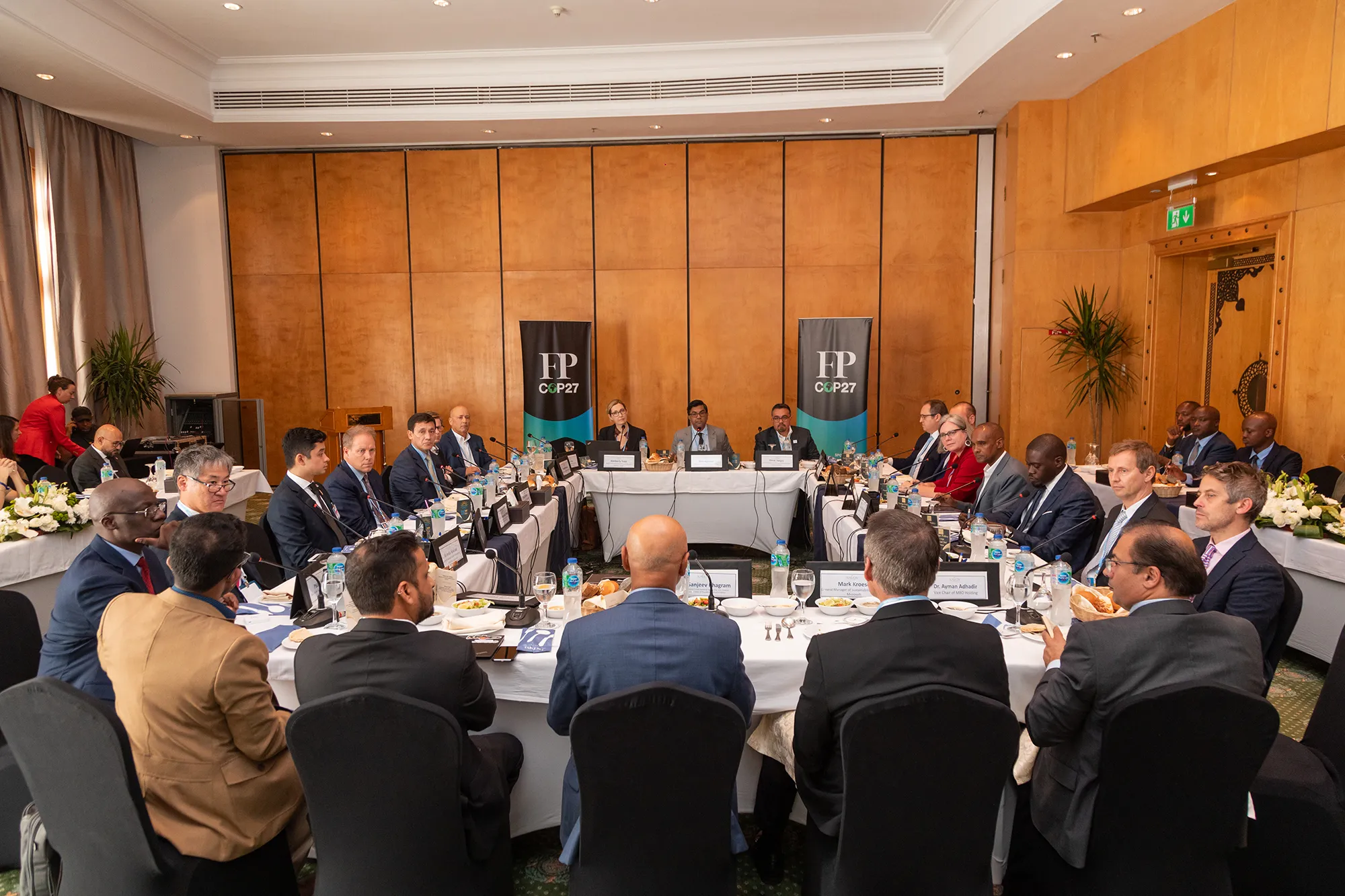
By FP Analytics, the research and advisory division of Foreign Policy, with support from the Presidency of the Republic of Kenya and the Thunderbird School of Global Management at Arizona State University.
February 2023
While countries have committed to reducing carbon emissions to net zero by 2050, such commitments are insufficient to address accelerating climate change. According to the Intergovernmental Panel on Climate Change (IPCC), the world will need to limit global warming to 1.5°C above pre-industrial levels by removing as much as 20 billion tons of CO2 per year by 2100. Achieving global climate ambitions and ensuring an equitable green transition requires investments and strategies—particularly from wealthy countries that are the largest contributors to climate change—to clean up and remove historic levels of CO2 emissions. Carbon dioxide removal (CDR) is the critical third pillar of climate transformation, along with climate adaptation and mitigation. But a lack of political will, limited financing, and underdeveloped national strategies hinder the research, development, and large-scale deployment of carbon removal solutions that will be vital to managing the climate crisis.
To address these issues, Foreign Policy, in partnership with the Presidency of the Republic of Kenya and Thunderbird School of Global Management at Arizona State University (ASU), hosted a close-door, high-level roundtable, Mobilizing Action to Scale Carbon Removal Solutions through the Global Carbon Removal Partnership (GCRP), at COP27 in Sharm El Sheik, Egypt, in November 2022.The GCRP is a multi-stakeholder partnership led by the Global South and focused on accelerating the deployment of responsible nature-based, technological, ocean, and circular economy carbon removal solutions. The event focused on the importance of CDR and the challenges and opportunities for safely and equitably scaling carbon removal solutions. The conversation included global and regional leaders and experts from international organizations, governments, the private sector, academia, and civil society. Participants discussed the policies, financing, and partnerships necessary for cities and countries to reach their climate goals by employing CDR strategies, and the obstacles that stakeholders still need to overcome to achieve transformative change. While the discussion highlighted challenges, including raising awareness regarding the importance of CDR to combat climate change, financing carbon removal technologies and projects, and developing transparent and inclusive processes for scaling CDR strategies, it also catalyzed action. This COP27 convening laid the foundation for country-level carbon removal roadmaps and action plans that will be rolled out in 2023, starting with Kenya. It will inform other roadmaps in Colombia and across the Global South. Key takeaways from the roundtable discussion are analyzed below.
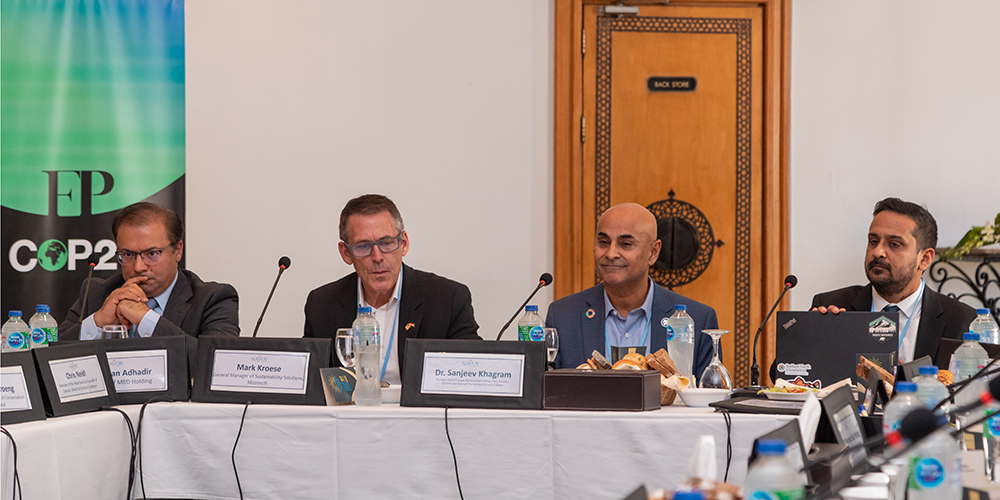
Elevating carbon removal on the global climate agenda
Around the world, climate-induced losses and damages are mounting and threatening development gains made over the last several decades. To mitigate the worst potential impacts of climate change, roundtable participants underscored the critical need for a significant and sustained reduction in greenhouse gas emissions (GHG) alongside large-scale removal of CO2 from the atmosphere. The amount of CDR, or “negative emissions,” depends on how quickly and extensively GHG emissions are reduced. CDR solutions include natural, technological, and ocean-based removal methods, such as reforestation, underground reservoirs, direct air capture technologies, and ocean fertilization. The IPCC warns that if the world does not scale its CDR capacities immediately, it could “overshoot”—or fail to reach—its 1.5°C target.Yet, roundtable participants noted that CDR remains an oft-overlooked issue on the global climate change policy agenda, including the official agenda of COP27. In fact, as the convenors of this discussion noted, the roundtable represented one of the most significant gatherings of carbon removal stakeholders in history.
Participants discussed the need to grow awareness among public- and private-sector stakeholders, in particular, to ensure that CDR is well integrated into national and international policies on climate change and that the necessary financing and off-take mechanisms are established to expand programs that enable its uptake. Participants stressed the role that CDR can play in facilitating a just green transition, particularly for low- and low-middle-income countries that are the least responsible for climate change but are among the most vulnerable to its impacts. Relatedly, participants stressed the need to ensure that carbon removal initiatives are not only technologically effective and durable, but also that they generate co-benefits for local communities, foster local ownership, and are socioeconomically inclusive. These objectives reflect the GCRP’s High Level Principles for Carbon Removal.
Overcoming the carbon removal financing gaps
Participants highlighted the lack of public and private financing as a significant challenge for deploying and scaling critical carbon removal technologies. Developed economies with advanced technology capabilities have the opportunity to drive down CDR costs and provide financial incentives to help climate-vulnerable communities in developing economies access a portfolio of CDR options. The United States, for example, through the 2022 Inflation Reduction Act (IRA), updated its climate tax credit policy to incentivize the use and development of carbon capture, removal, and storage to advance decarbonization efforts across crucial industries such as steel, cement, refining, and power generation. In November 2022, the European Commission adopted an unprecedented, EU-wide voluntary framework that seeks to catalyze innovative carbon removal technologies, support sustainable carbon farming solutions, and certify high-quality carbon removals as part of an ongoing net-zero initiative aimed at making Europe a climate-neutral continent by 2050.
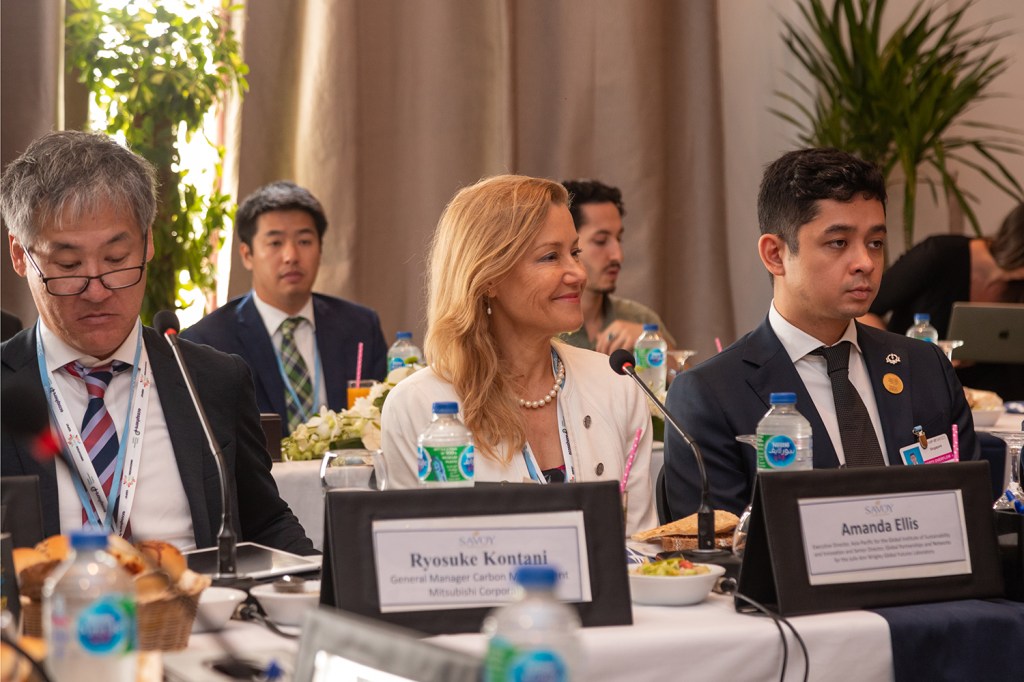
During the roundtable, participants also discussed how CDR could be an alternative to extractive industries that harm the natural environment and serve as a viable source of revenue generation and livelihood support. Countries with expansive logging and mining industries, like Malaysia, are contending with deforestation and destruction of native peatlands, which produce a dead plant material that traps large amounts of carbon and plays a critical role in biodiversity. Emerging carbon capture, utilization, and sequestration technologies could allow countries to provide income-generating opportunities and generate local revenue by converting captured CO2 into usable products like “green fertilizers,” which help improve agricultural yields and soil health. To advance research and development, and scale CDR technologies, participants called for clarification of carbon removal targets; standardization for monitoring, reporting, and verification to measure progress toward those targets; and the development of additional revenue streams.
At the same time, participants emphasized that carbon removal is not a substitute for climate mitigation. The goal for CDR is to remove legacy carbon from the atmosphere while supporting local communities, livelihoods, and the environment where carbon removal is taking place. For example, Climate Action Platform-Africa (CAP-A) is a Kenya-based initiative that works with public- and private sector partners to develop and implement transformative sustainable climate mitigation solutions.
Cities paving the way by innovating and scaling up
As governments begin to set more ambitious climate targets, cities are emerging as leaders and innovators in carbon removal solutions by proving concepts that can help inform others’ carbon removal strategies. For example, in partnership with technology start-ups, academic institutions, and non-profit and local organizations, Nairobi is providing clean-energy mass transit vehicles and developing new tools to help policymakers identify potential opportunities for carbon removal, revenue, livelihood, and job opportunities.
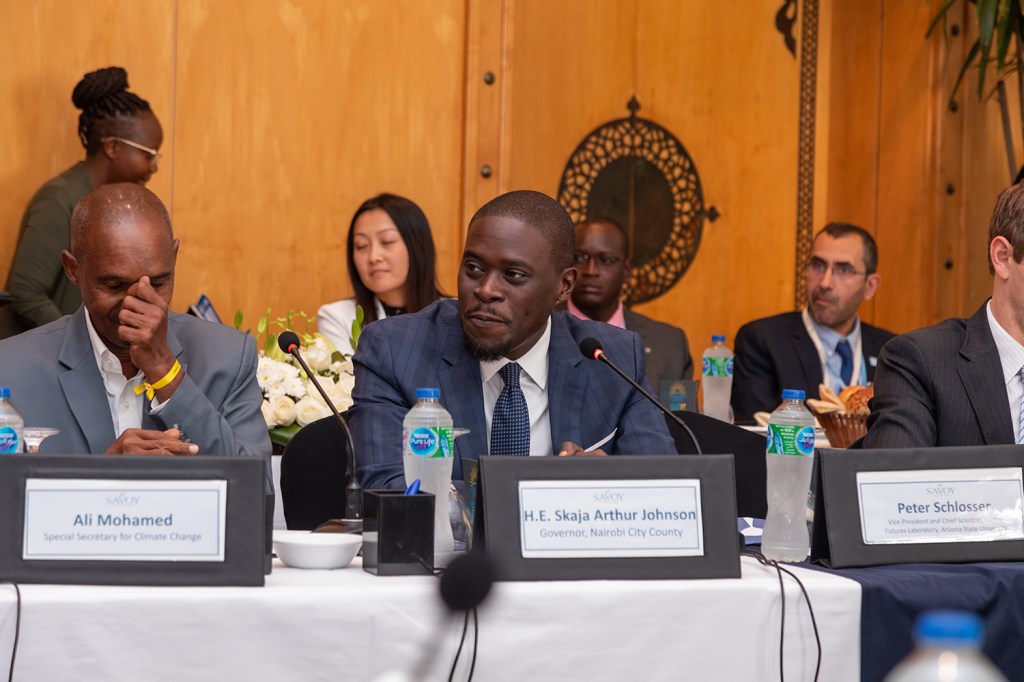
Participants noted that cities can be optimal partners to pilot CDR solutions because they understand local contexts, move relatively quickly compared to federal governments, more readily address social skepticism, and establish replicable models. Partnerships, participants agreed, are critical to facilitating domestic and international city-to-city partnerships, which can help boost innovation and enable cities to exchange best practices and learn from one another’s experiences.
Reducing investment risks via public-private partnerships
Roundtable participants discussed the critical role the private sector needs to play in global efforts to develop and refine CDR technologies and strategies. However, increasing private investment will require government support to minimize risk and optimize return ratios. Offtake agreements—which enable buyers to purchase carbon credits at a set price several years into the future—could unlock financing and drive greater capital allocation into the sector by providing access to high-quality, verifiable credits; allowing private- and public-sector actors to foster long-term financing partnerships; and assisting companies in estimating the costs of achieving climate targets. For example, in July 2022, Climeworks and Microsoft signed a long-term offtake agreement where Climeworks pledged to permanently remove 10,000 tons of carbon emissions over the next ten years as part of Microsoft’s efforts to be carbon negative by 2030 and removing all historic CO2 emissions by 2050.
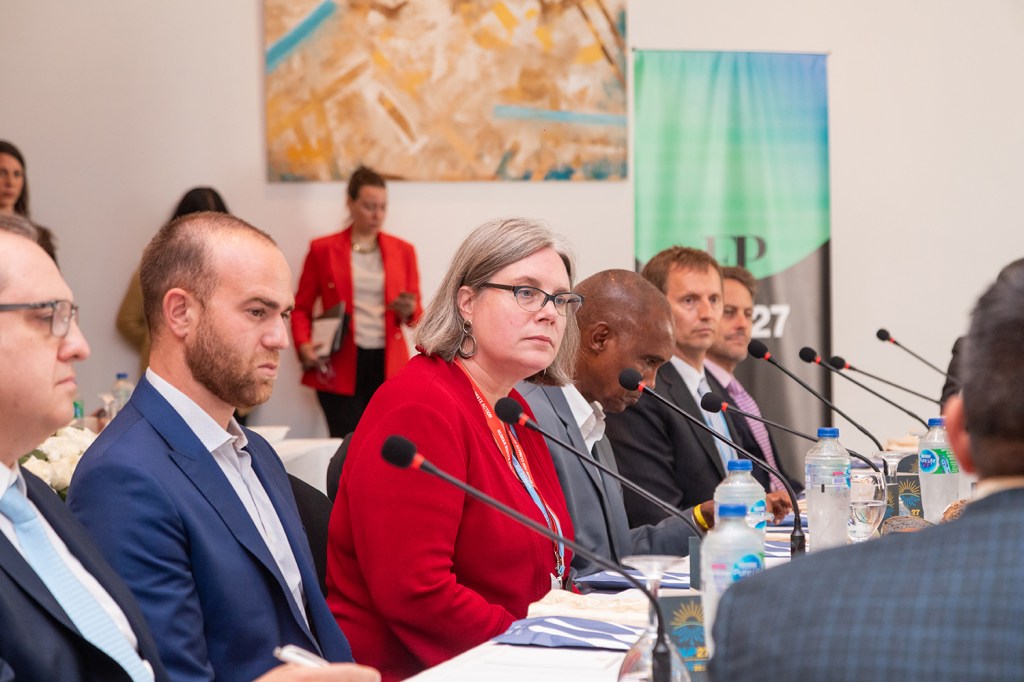
Participants also underscored the need to evaluate various environmental domains such as the world’s oceans where public-private CDR collaboration and investments are lacking. The oceans are estimated to have 50 times more CO2 than the atmosphere and 20 times more CO2 than land plants, making them one of the largest carbon sinks on Earth. While oceans absorb 30 percent of CO2, the process is driving ocean warming, oxygen loss, and acidification—significantly impacting oceans’ ability to support economies and livelihoods around the world. There is currently no viable pathway for removing carbon from the ocean. Ocean-based carbon removal methods are in the nascent stages of development, and governance questions remain regarding who is responsible for ocean-based CDR across the high seas. Participants highlighted the role that developing countries, particularly those that depend on oceans, can play in shaping CDR strategies and technologies going forward.
Looking Ahead
CDR remains an underleveraged but promising area of technological innovation and policy advancement to meet the greatest climactic and socioeconomic challenges of our time. However, progress will require significant investments in CDR and growing recognition about the urgency of carbon removal. To that end, roundtable participants called for future multi-stakeholder convenings, such as this roundtable, to help public, private, multilateral, and civil society stakeholders to come together to enable networking, facilitate partnerships, and expand the international community’s understanding of the opportunities and challenges for CDR expansion at the local, national, and global levels. Indeed, building on the momentum from COP27 and this roundtable, several countries, including Nigeria and Kenya, launched CO2 removal initiatives to innovate and find solutions to implement CDR. While the level of engagement from these countries with regard to their aspirations for moving forward with responsible carbon removal solutions was encouraging, the right partnerships are necessary to provide the enabling policy, finance, and technology. With more countries aiming to achieve net-zero emissions by 2050, COP28 in Dubai, United Arab Emirates, represents a key opportunity to elevate CDR on the global climate policy agenda and strengthen institutional and financial mechanisms to develop and scale CDR solutions. For instance, in its 2022 report, the UN Secretary General’s High Level Expert Group on the Net Zero Emission Commitments of Non-State Entities found that a clearer regulatory regime is crucially needed for carbon credits to ensure positive social and economic outcomes where carbon removal projects and investments take place. As such, on the road to COP28, President William Ruto announced that Nairobi will host the annual Climate Action conference in mid-2023.
Roundtable participants also called for greater engagement and leadership from international organizations to align regional and global efforts for carbon removal. Currently, there are individual countries launching initiatives to support the development and deployment of CDR, such as the United Kingdom which pledged £54 million, or about $64 million, to develop carbon removal technologies as part of its long-term net zero strategy. However, such efforts on their own are inadequate to meet the goals outlined in the Paris Agreement. Not only are expanded efforts across countries and regions needed, but so too are greater coordination and collaboration. Recognizing this gap, the Government of Kenya proposed a resolution to the UN General Assembly in September 2020 to ensure that CDR is a global priority alongside decarbonization. Moving forward, creating long-term carbon removal pathways will be essential for the world to reverse and decelerate the impacts of worsening climate change. To that end, GCRP plans to transition into the first international organization globally focused on carbon removal. For communities that are the most climate-vulnerable, scaling CDR equitably and transparently is ultimately key, not only to achieving sustainable livelihoods, but to their very survival.
The GCRP, in response to its country engagement process and key discussion points highlighted as part of the roundtable, is aiming to further support countries through multistakeholder approaches, including developing country-level carbon removal roadmaps and action plans. Kenya has committed to this process, with other countries coming online in 2023. It will allow for the sharing of good practices and peer-to-peer learning across a range of countries. It will also offer opportunities for South-South and North-South cooperation and accelerate the deployment of responsible carbon removal solutions in the Global South that consider project quality in terms of social and environmental equity, co-benefits, and local ownership.



